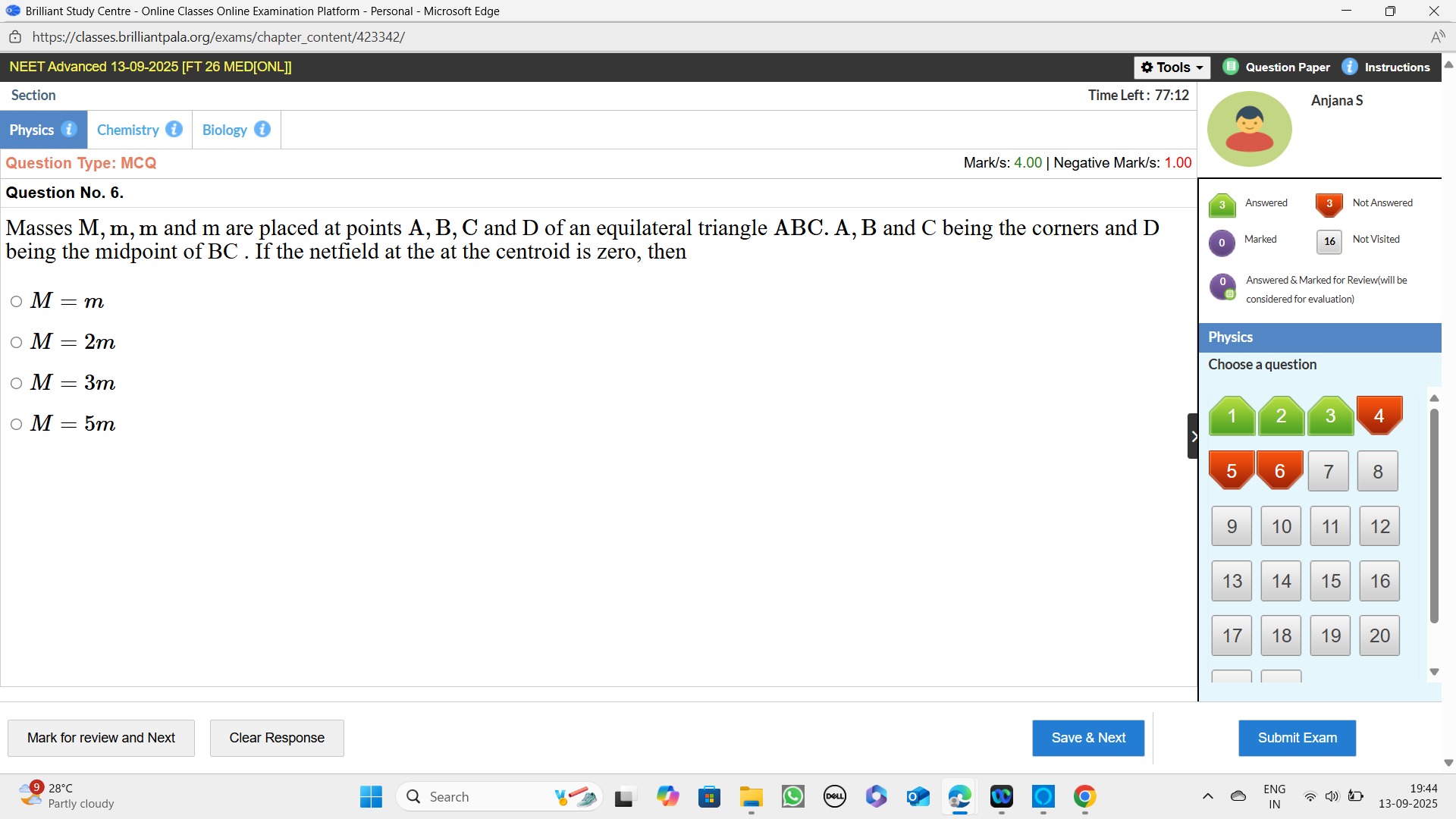Question
Question: Masses M, m, m and m are placed at points A, B, C and D of an equilateral triangle ABC. A, B and C b...
Masses M, m, m and m are placed at points A, B, C and D of an equilateral triangle ABC. A, B and C being the corners and D being the midpoint of BC. If the net field at the at the centroid is zero, then

M = m
M = 2m
M = 3m
M = 5m
M = 5m
Solution
Let G be the centroid of the equilateral triangle ABC. Let the origin of our coordinate system be at G. For an equilateral triangle, the centroid is equidistant from its vertices. Let this distance be R. The distance from the centroid to the midpoint of a side is R/2. Let D be the midpoint of BC.
The position vectors of the vertices A, B, C from the centroid G satisfy rA+rB+rC=0. The position vector of D, the midpoint of BC, is rD=2rB+rC. Substituting rB+rC=−rA, we get rD=−2rA. This implies that rA and rD are collinear and point in opposite directions, with ∣rD∣=∣rA∣/2.
The gravitational field at the centroid G due to a mass mi at position ri is given by Ei=−G∣ri∣3miri (where ri is the position vector from the mass to the point G).
The masses are M at A, m at B, m at C, and m at D. The net field at G is zero. Enet=EA+EB+EC+ED=0.
The distances from G to A, B, C are all R. The distance from G to D is R/2. EA=−GR3MrA EB=−GR3mrB EC=−GR3mrC ED=−G(R/2)3mrD=−GR38mrD
Summing these fields and setting to zero: −GR3MrA−GR3mrB−GR3mrC−GR38mrD=0 Multiplying by −GR3: MrA+mrB+mrC+8mrD=0 MrA+m(rB+rC)+8mrD=0 Substitute rB+rC=−rA: MrA+m(−rA)+8mrD=0 (M−m)rA+8mrD=0 Substitute rD=−2rA: (M−m)rA+8m(−2rA)=0 (M−m)rA−4mrA=0 (M−m−4m)rA=0 (M−5m)rA=0 Since rA is a non-zero vector (pointing from G to A), the coefficient must be zero: M−5m=0⟹M=5m.
